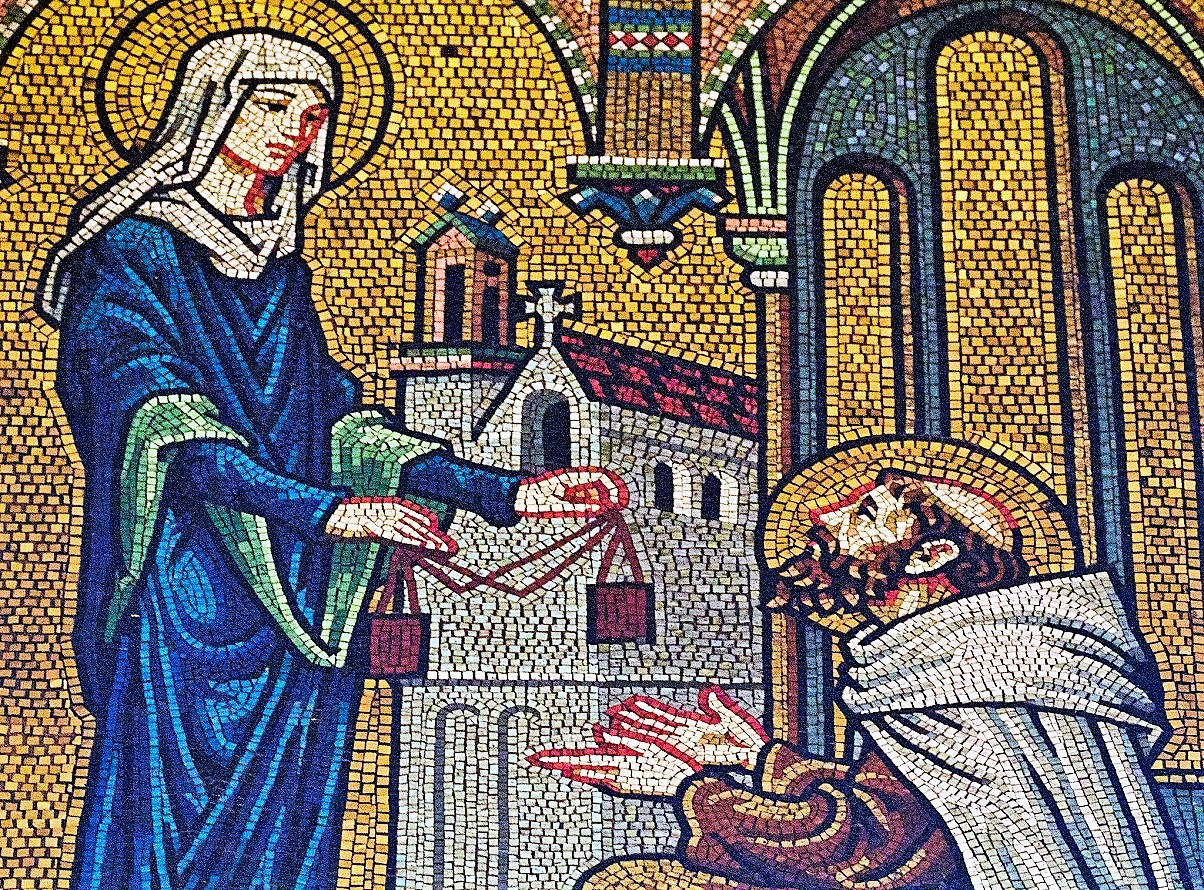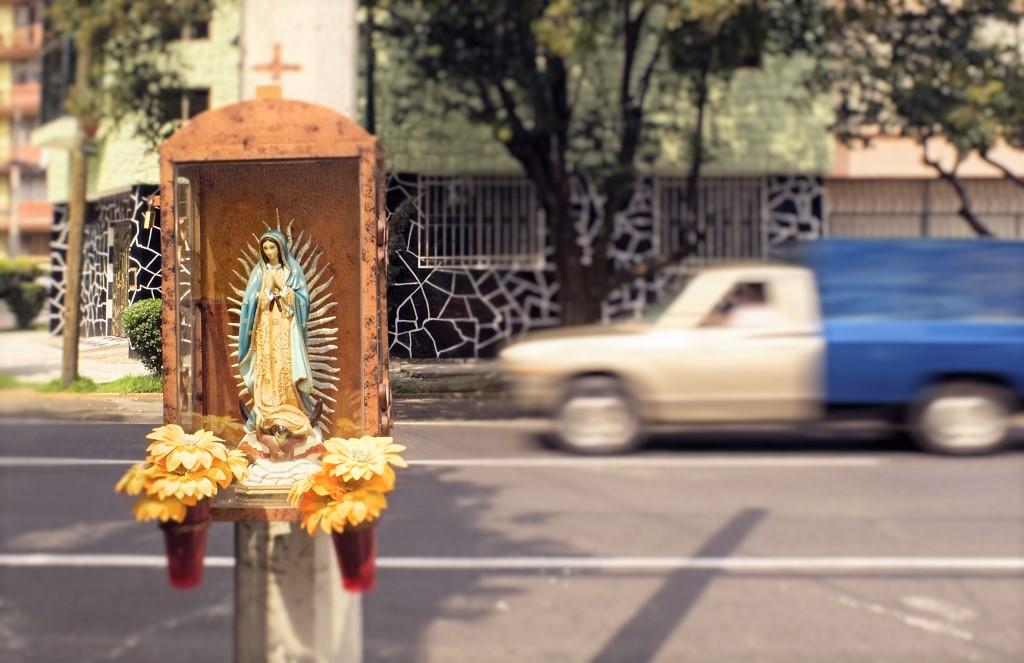I had a doctor appointment on Monday, and as I left the office, I found a brown scapular with an image of Our Lady of Guadalupe. I couldn’t leave it there, so I picked it up and it’s now hanging in my work space.
It’s certainly true that, for people of other faiths or sects, many Catholic traditions look a little weird. I think the scapular falls into that category. But scapulars have a long, rich history; let’s explore this tradition a bit.
- A scapular, historically, was a long piece of cloth that goes over one’s head, and hangs down the front and back (many religious orders still wear these.) “Scapular” comes from the Latin scapula which means “shoulder.” That makes sense since the scapular lays on one’s shoulders. Today, lay people who wear a scapular usually wear one with two small pieces of wool, connected by cord or ribbon, that hangs down one’s front and back.
- There are many kinds/colors of scapulars. Two popular ones are green scapulars and brown. The green scapular has an image of the Immaculate Heart of Mary and an image of Mary herself, pointing to her Immaculate Heart. Many people relate the green scapular to conversion to a life in Christ. The brown scapular is probably the one most people are familiar with. Tradition says that Mary gave this scapular to St. Simon Stock in the year 1251 AD. Mary’s promise that accompanies this scapular is that the person who wears it with faith “will not suffer everlasting fire.” That may sound like a “Get Out of Hell Free” card, but it’s not. We must be in a state of grace at the moment of death, regardless of what we are wearing at the time.
- Scapulars (like rosaries, holy medals, crosses and crucifixes, for instance) are “sacramentals. “Sacramentals do not confer the grace of the Holy Spirit in the way that the sacraments do, but by the Church’s prayer, they prepare us to receive grace and dispose us to cooperate with it. ‘For well-disposed members of the faithful, the liturgy of the sacraments and sacramentals sanctifies almost every event of their lives with the divine grace which flows from the Paschal mystery of the Passion, Death, and Resurrection of Christ. From this source all sacraments and sacramentals draw their power.'” (CCC 1670) Simply put, a sacramental points us towards and leads us to Christ.
- Scapulars should be blessed by a priest, and like any sacramental that has been blessed, we take great care in how that object is treated. (That’s why I picked up that stray scapular they other day!) Once an object is blessed, and is no longer useful (for instance, the cord on a scapular breaks or a prayer book falls apart) the object can either be buried or burned and then the ashes are buried.
- Many popes have been great “fans” of scapulars, including St. John Paul II:
Pope John Paul II, who is reported to have worn a brown scapular since he was a boy, insisted doctors not remove his scapular during surgery following the assassination attempt in May 1981. Father Mariano Cera, a Carmelite priest, told Inside the Vatican magazine: “Just before the Holy Father was operated on, he told the doctors, ‘Don’t take off the scapular.’ And the surgeons left it on.” In his message to the Carmelites at the 750th anniversary of the bestowal of the scapular, Pope John Paul II said those who wear the scapular — or habit, as he called it — dedicate themselves to the service of Our Lady for the good of the whole Church. “Devotion to her,” he continued, “cannot be limited to prayers and tributes in her honor on certain occasions, but must become a ‘habit,’ that is, a permanent orientation of one’s own Christian conduct, woven of prayer and interior life, through frequent reception of the sacraments and the concrete practice of the spiritual and corporal works of mercy.”
While scapulars may be unfamiliar to many people (Catholics included!), they are items that can be constant reminders that we “have put on Christ” in our baptismal promises. Scapulars, like all sacramentals, can keep us “tuned in” to Christ, all day, every day.
 Elise Hilton is an author, blogger and speaker. Her role at Diocesan Publications is Editor & Writer with the Marketing Team. She has worked in parish faith formation and Catholic education for over 30 years. A passionate student of theology, Elise enjoys sharing her thoughts on parish communication, the role of social media in the Church, Franciscan spirituality and Catholic parenting. To enquire about booking her as a speaker, please contact her at ehilton@diocesan.com.
Elise Hilton is an author, blogger and speaker. Her role at Diocesan Publications is Editor & Writer with the Marketing Team. She has worked in parish faith formation and Catholic education for over 30 years. A passionate student of theology, Elise enjoys sharing her thoughts on parish communication, the role of social media in the Church, Franciscan spirituality and Catholic parenting. To enquire about booking her as a speaker, please contact her at ehilton@diocesan.com.


